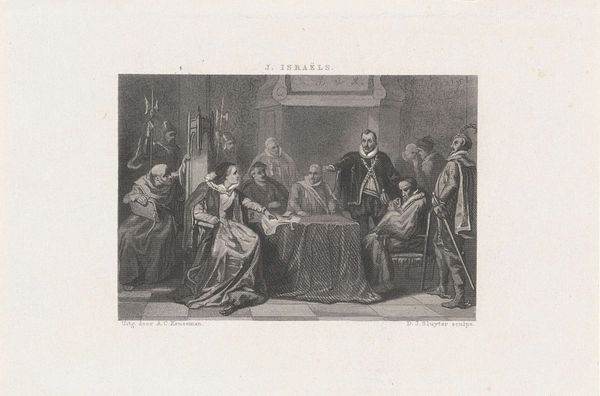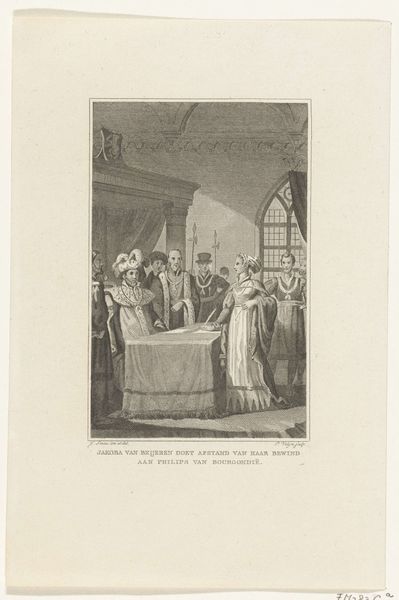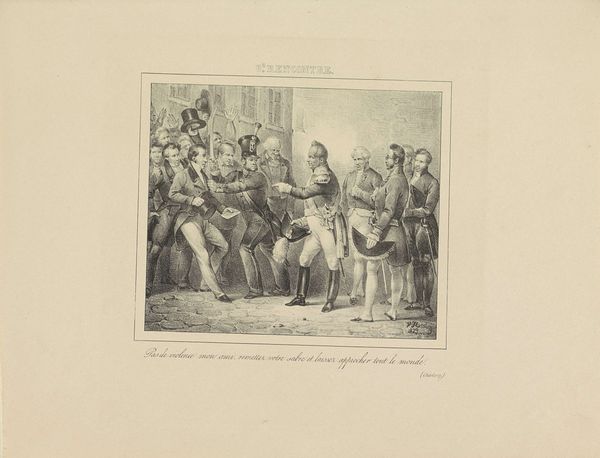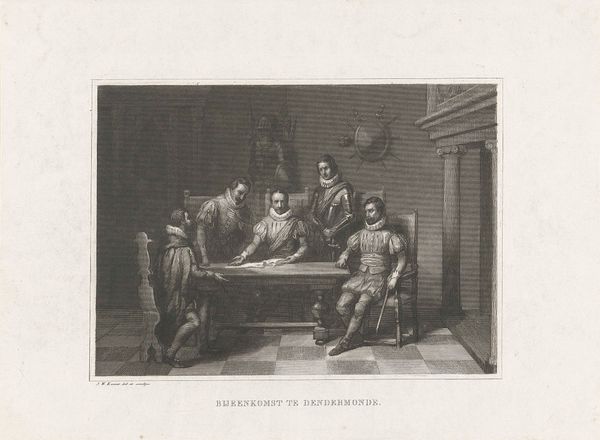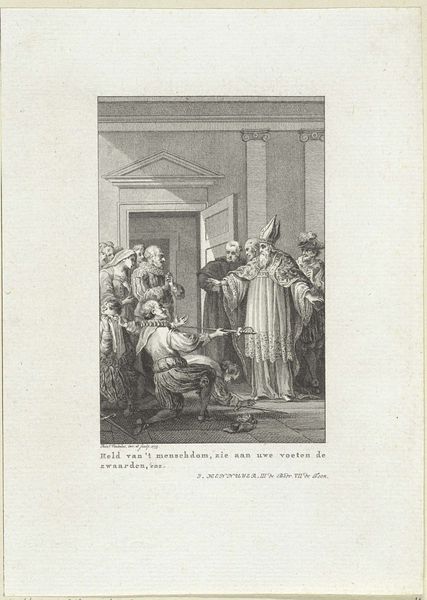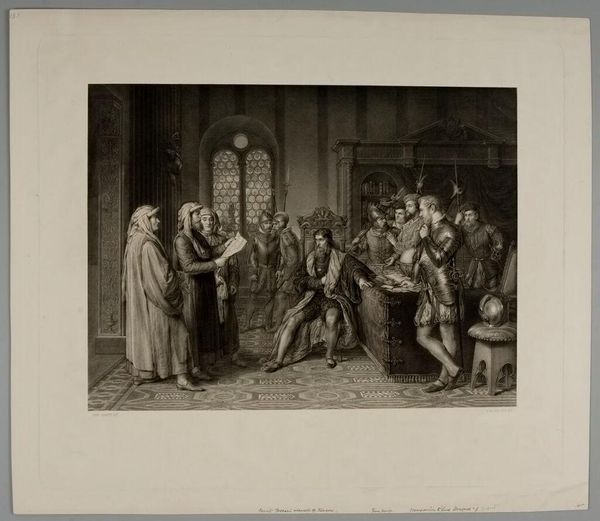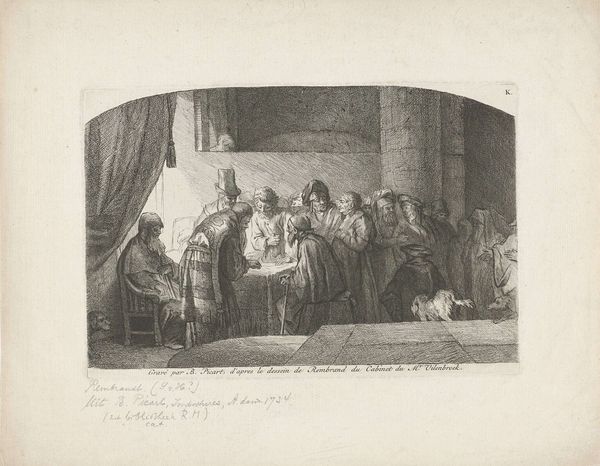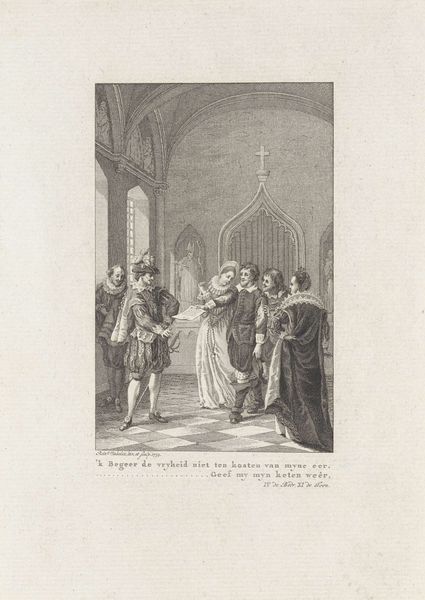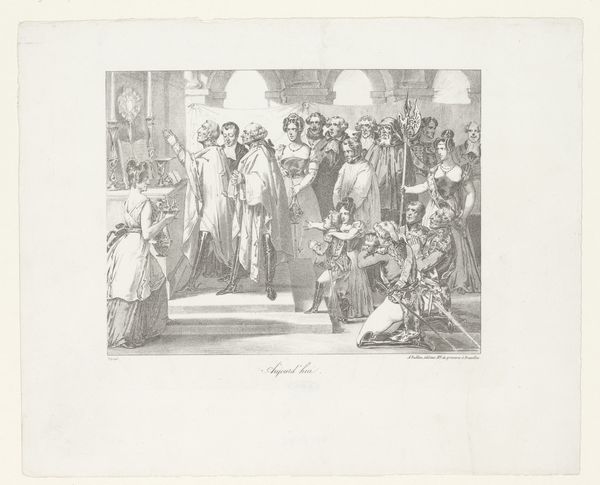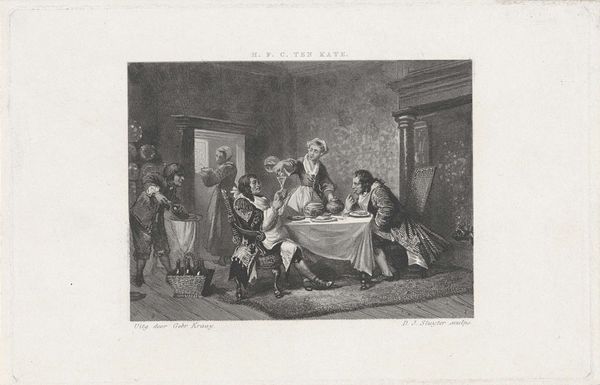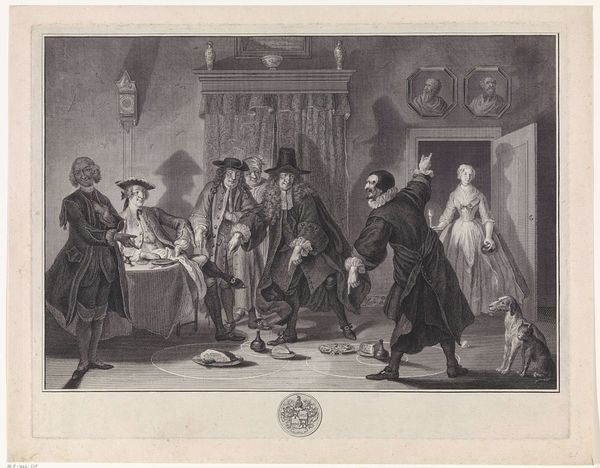
Nederlandse gezanten onderhandelen te Algiers over de uitwisseling van gevangenen, 1620 1860
0:00
0:00
Dimensions: height 211 mm, width 283 mm
Copyright: Rijks Museum: Open Domain
Editor: This is "Nederlandse gezanten onderhandelen te Algiers over de uitwisseling van gevangenen, 1620," or "Dutch Envoys Negotiating in Algiers about the Exchange of Prisoners, 1620," a print after Jan Frederik Christiaan Reckleben, dating to 1860. It’s quite a detailed engraving! There’s a real sense of tension, almost theatrical. What's your interpretation of the power dynamics displayed here? Curator: It's fascinating to consider this image as a construction of national identity. Remember, it's produced in 1860, long after the depicted event. It portrays the Dutch Republic asserting its power on the international stage, negotiating with Algiers. How might this scene, created centuries later, serve the political and cultural needs of the 19th-century Netherlands? Editor: That's interesting – so you're saying it's less about historical accuracy and more about a certain image the Netherlands wanted to project? Like a historical flex? Curator: Precisely! Think about it: the "Barbary pirates" were a significant challenge to European powers. This image highlights a moment of supposed Dutch triumph and diplomacy. Whose story does this engraving center, and whose does it marginalize? Editor: The Dutch, obviously. The Algerians are exoticized and sort of...pushed to the sides. It makes me wonder about the reliability of historical narratives in art. Curator: Exactly! The artist chooses to depict a specific interpretation of events, often reflecting the values and ideologies prevalent during their own time. So, what new questions does this work prompt about how history is visually constructed and consumed? Editor: It definitely makes you consider whose perspective is being prioritized, and what might be missing from the narrative. Thanks for making me see it in a different light. Curator: And for me, it is always a fascinating reminder that even seemingly historical artworks are very much a product of their own present.
Comments
No comments
Be the first to comment and join the conversation on the ultimate creative platform.

